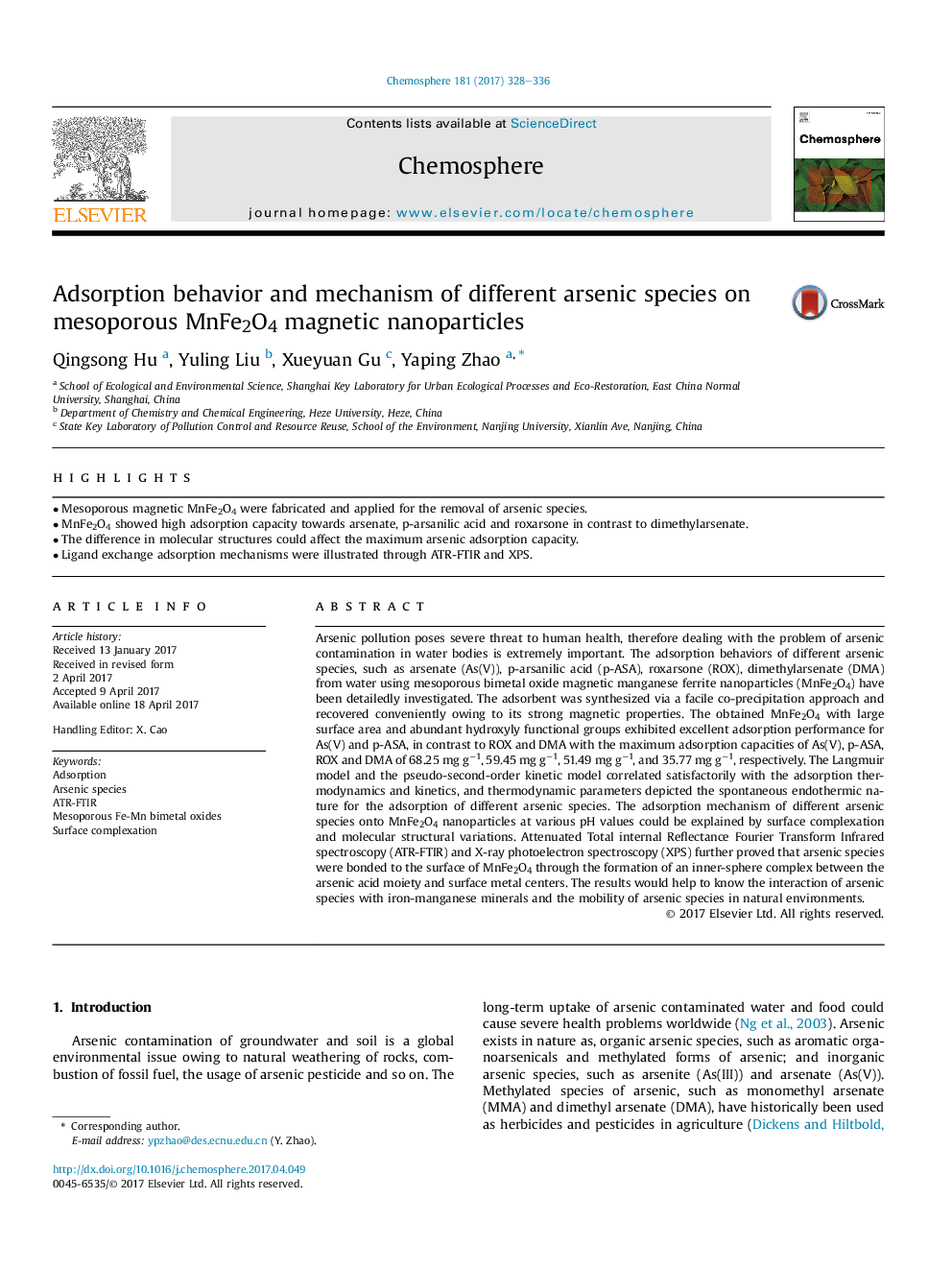| کد مقاله | کد نشریه | سال انتشار | مقاله انگلیسی | نسخه تمام متن |
|---|---|---|---|---|
| 5747137 | 1618790 | 2017 | 9 صفحه PDF | دانلود رایگان |

- Mesoporous magnetic MnFe2O4 were fabricated and applied for the removal of arsenic species.
- MnFe2O4 showed high adsorption capacity towards arsenate, p-arsanilic acid and roxarsone in contrast to dimethylarsenate.
- The difference in molecular structures could affect the maximum arsenic adsorption capacity.
- Ligand exchange adsorption mechanisms were illustrated through ATR-FTIR and XPS.
Arsenic pollution poses severe threat to human health, therefore dealing with the problem of arsenic contamination in water bodies is extremely important. The adsorption behaviors of different arsenic species, such as arsenate (As(V)), p-arsanilic acid (p-ASA), roxarsone (ROX), dimethylarsenate (DMA) from water using mesoporous bimetal oxide magnetic manganese ferrite nanoparticles (MnFe2O4) have been detailedly investigated. The adsorbent was synthesized via a facile co-precipitation approach and recovered conveniently owing to its strong magnetic properties. The obtained MnFe2O4 with large surface area and abundant hydroxyly functional groups exhibited excellent adsorption performance for As(V) and p-ASA, in contrast to ROX and DMA with the maximum adsorption capacities of As(V), p-ASA, ROX and DMA of 68.25 mg gâ1, 59.45 mg gâ1, 51.49 mg gâ1, and 35.77 mg gâ1, respectively. The Langmuir model and the pseudo-second-order kinetic model correlated satisfactorily with the adsorption thermodynamics and kinetics, and thermodynamic parameters depicted the spontaneous endothermic nature for the adsorption of different arsenic species. The adsorption mechanism of different arsenic species onto MnFe2O4 nanoparticles at various pH values could be explained by surface complexation and molecular structural variations. Attenuated Total internal Reflectance Fourier Transform Infrared spectroscopy (ATR-FTIR) and X-ray photoelectron spectroscopy (XPS) further proved that arsenic species were bonded to the surface of MnFe2O4 through the formation of an inner-sphere complex between the arsenic acid moiety and surface metal centers. The results would help to know the interaction of arsenic species with iron-manganese minerals and the mobility of arsenic species in natural environments.
Journal: Chemosphere - Volume 181, August 2017, Pages 328-336